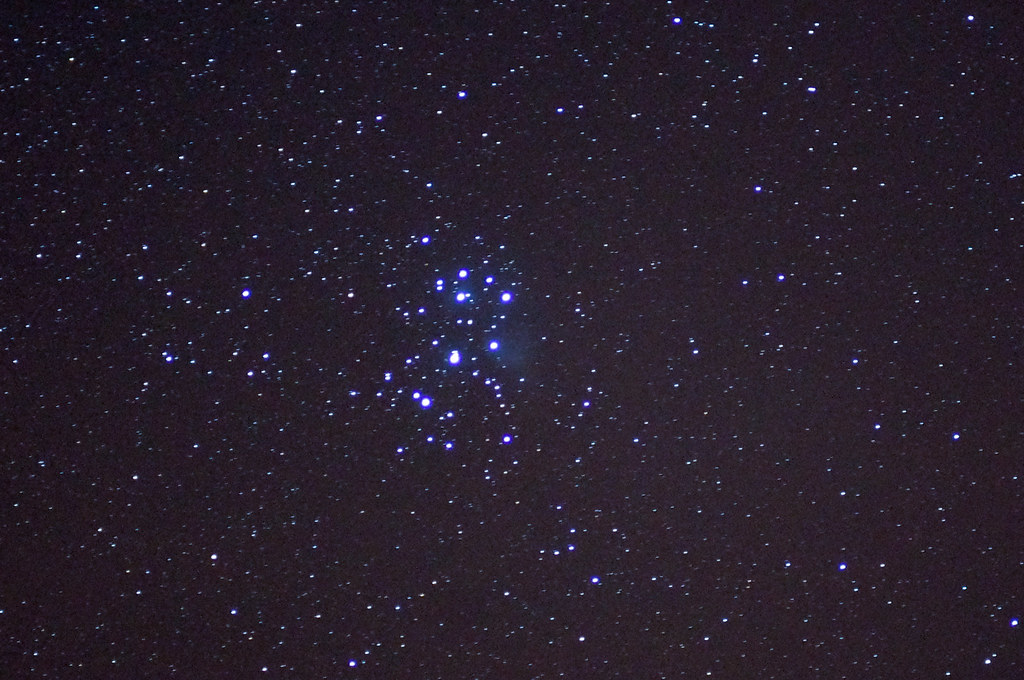 Originally posted by cometguy
Originally posted by cometguy 
This may not be the proper thread to get a good answer to this question, but I'm thinking about buying a K-1 II camera and am wondering what advantages or pluses (vs. negatives) such a full-frame Pentax camera has with respect to APS-C Pentax cameras for astrophotography specifically. I know that there are smaller pixels in the K-3 cameras than in the K-1 cameras, and this is somewhat significant for long-telephoto imaging of the moon and planets (i.e., you want smaller pixel sizes). Does anybody have experience doing astrophotography with both the K-1 and K-3 (or KP or K-5) cameras, for example, who can comment based on comparative experiences using both FF and APS-C sensors for night-time imaging?
This is a topic of much discussion. Unfortunately from my understanding of things there isn't a clear good answer. The best way to answer is with another question. What do you want to shoot?
You mentioned the moon and planets which are very different from shooting deep sky objects. Because these objects are bright light gathering isn't any where near the issue it is with deep sky objects. For things like that look for focal length and adapting a telescope. It won't matter much what camera you hang off the back.
Beyond that do you prefer panoramas and wide shots of the night sky, or do you want to chase objects like what is in the
Messier catalogue?
That is an important consideration as you are looking to compare the framing you get with each camera+lens combination to the amount of dynamic range you get with that same camera-lens setup.
In general if I needed to buy a camera now It would be a hard choice between the K-1ii and KP but for my use case of going after DSOs the KP would be a slightly better choice. However I currently am under the assumption that the K-3iii will be a very clear upgrade for astro shooting. Personally I like to look here to compare dynamic range at the ISOs I would shoot at. When looking at the regular K-1 and K-3
the K-1 offers a bit less than 1 stop more dynamic range when shooting at ISO 3200. However I would have to use a longer lens to get the same framing on the K-1. This would result in me having to run a 600mm lens instead of my 400mm, but using that 600mm lens I give up a stop of light since there isn't a 600mm f/2.8 lens that I can stick in front of my camera. So by using the K3 + SMC A* 400mm f/2.8 ED [IF] I get better performance than running a K-1 and any of the * 600mm f/4 lenses, also from what I have read the 400/2.8 is a better sharper lens anyways. However running an APS-C camera for wide astro shots actually hurts me as really wide lenses tend to get slower. I have the Laowa 12mm f/2.8 Zero-D but to get a similar wide shot with a K-1 one could use an 18mm lens. The 12/2.8 is fairly fast (and it is a really good astro lens), but getting a similar fast or faster lens that gives similar framing on full frame is doable. So after taking a quick look over in the lens review section there is the Samyang 16mm F2 ED AS UMC CS which would give a bit wider framing on full frame than my 12mm on APS-C but that lens is a whole stop faster than my 12mm. Also since the K-1 has almost another stop worth of dynamic range that setup would provide a little less than 2 stops more of usable data with each shot. However that 12mm can do longer untracked exposures than the 16mm without showing trails so that eats some of that 2 stops but not even an entire stop's worth so the K-1 is still a clear winner.
So with those 2 quick examples hopefully I have clarified things some and said that it is a maybe. Figure out your use case and then figure out the best combination. Astrophotography sadly is one area of photography where throwing money/gear at the problem more often than not does dramatically improve the result. When the K-3iii comes out it will very clearly be the best option for a Pentax astro camera (my educated guess and opinion) but I would then assume that the next iteration of the K-1 would again lead to the analysis above being the correct method of analysis.


 Similar Threads
Similar Threads 



















 Post #1 by MossyRocks
Post #1 by MossyRocks








